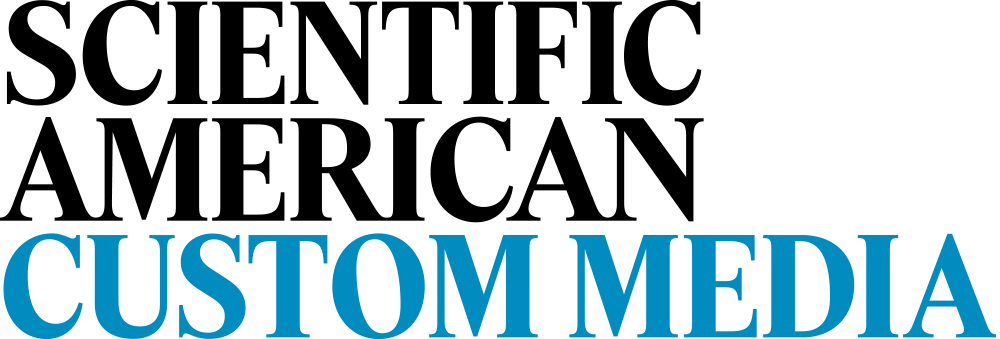Good news for worms: Researchers have found a treatment that extends roundworms’ lives by up to a factor of ten. They’ve also learned how to give mice an extra 50 percent of healthy longevity. And a healthy-life-extending treatment is now being tested on dogs whose owners are eager to keep their beloved pets around as long as possible.
But what about us? Can medical science help more people—perhaps even most—live past 90 and longer in good health?
Science may be closer to delaying the various infirmities of aging than most people realize. Drugs known to slow aging in animals might well safely do the same for humans, and researchers are working hard to bring more of them closer to clinical trials. One of them, metformin, has already been approved by the FDA for testing as an anti-aging drug, and others are being taken by hundreds of people outside official trials. “I’ve been in this field for more than 30 years, and I’ve never seen this level of excitement,” says Steve Austad, a healthy-aging-focused biologist at the University of Alabama at Birmingham, and scientific director of the American Federation for Aging Research.
We may not even have to wait decades for anti-aging drugs to extend our healthy years. Researchers are finding ways to gather and enlist vast streams of personal health data to help keep people sharp and active well beyond their 70s. “The idea that you can be in your 90s and be mentally agile and physically robust is perfectly realistic,” says Leroy Hood, a biologist who at the California Institute of Technology and University of Washington helped pioneer the genomics revolution, and is now CEO of the health-related nonprofit Phenome Health, as well as co-founder of the Institute for Systems Biology. (He’s 86.)
Critically, the effort to keep aging at bay focuses not on merely adding years to people’s lives, but on making those extra years healthy ones. For more than a century, progress in medical science has helped increase average lifespans around the world. But the average number of years of good health people enjoy—their healthspan—hasn’t been growing as quickly as lifespan. In the U.S., the average person can expect to experience nearly 13 years of relatively poor health in late life, compared to fewer than 11 years in 1990, according to the Institute for Health Metrics and Evaluation. In poorer parts of the world, the gap between lifespan and healthspan is even larger.
To shrink that gap, aging science is increasingly focused on healthspan rather than lifespan. Healthspan is now an important metric at the World Health Organization, and the subject of published research and scientific conferences. “We don’t want to extend the period of decrepitude, that’s just making people sick for longer,” says João Pedro de Magalhães, a professor of molecular biogerontology at the University of Birmingham in the United Kingdom. “Our goal is to extend lifespan while having the health of someone 20 years younger.”
Keeping people healthy and independent longer into old age would not only improve the quality of their lives, it would also help to relieve the massive and fast-growing healthcare and economic burdens of poor elder health. The U.S. Centers for Medicare and Medicaid Services (CMS) calculated that in 2020 adults 65 and older accounted for 37 percent of personal healthcare costs, though they were only 17 percent of the population, and annual spending on adults over 85 that year averaged more than $35,000 per person. Those numbers are likely to climb: The number of people who are older than 80 is on track to triple by 2050. Aging also indirectly takes a toll on the millions of people who must become caregivers to elder family members with disabling disease and mobility challenges. About one out of six U.S. adults provides unpaid care to a senior.
Increasing healthspan could also improve health equity. Those with curtailed access to good medical care, nutritious food, clean air and other resources important to health already bear more than their share of the disease burdens of age. According to figures from the U.S. Centers for Disease Control and Prevention (CDC), Black Americans are 80 percent more likely to be diagnosed with diabetes than white Americans, with most cases involving older adults; similar disparities exist with other common diseases of older age. Extending health into later years can help ameliorate some of those disparities. “Good health underlies everything important to what it means to be human, from early development to education to jobs to being part of a community,” says Hood. “Good health should be part of old age, too.”
Science is exploring two different paths to growing healthspan. One is to attack the aging process directly by identifying the biological mechanisms that drive it and finding drugs that slow them down—which should also fend off the diseases that tend to come with aging, as most significant diseases do. The other is to shift healthcare away from simply treating a patient’s disease after symptoms have emerged in older age, toward a “scientific wellness” approach involving heading those diseases off earlier on through the use of data-driven diagnostic tools, precision medicine and tailored lifestyle coaching. Will these efforts be enough to close the healthspan gap?

Greg Betza
Slowing the decline
Aging isn’t a disease, but it’s the major pathway to disease. “The biology of aging is at the core of most diseases that lead to a decline in a person’s ability to function well,” says Matt Kaeberlein, a former professor of biogerontology at the University of Washington, who left in 2023 to become CEO of Optispan, a company dedicated to developing ways to extend healthspan. Aging is the biggest risk factor for nine of the ten most common causes of death. “Aging probably isn’t just a risk factor for most of those diseases, but a cause. The more precisely we can understand the biological mechanisms of aging, the more precisely we can target interventions.”
Although scientists are beginning to unravel those mechanisms, many remain a mystery, says the University of Birmingham’s de Magalhães. But science, he adds, has moved much closer to penetrating that mystery by making a big conceptual leap: seeing aging not as an inevitable wearing out of the body’s components, akin to the way a car deteriorates with decades of use, but rather as a specific set of biological processes that evolution has programmed into our genes.
If that’s true, then it should be possible to find drugs that interfere with that programming—a focus of de Magalhães’s lab and several others around the world. “We’re using computational and experimental methods to identify new compounds that work as longevity drugs,” he says.
Evidence is building that such drugs would also act to preserve health, and the drug that many anti-aging researchers consider the most promising is rapamycin. It was approved in 1999 for suppressing the immune system of patients receiving kidney transplants to avoid rejection of the transplanted organ. It is also used for treating and preventing certain cancers. In 2012 a study found that roundworms exposed to rapamycin lived an astonishing ten times longer than their average lifespan of less than two weeks. The reason it works is not understood, but it has since been shown to stretch the healthspan—as measured in extended periods of normal activity and the absence of significant disease—of several other animals, including flies and mice. It’s currently under study in dogs and monkeys. “If it works in those studies, I think we’d have a case for trying it on people,” says de Magalhães.
The University of Alabama’s Austad agrees that rapamycin is ripe for a human trial as a longevity drug. The FDA has yet to approve such a study, even though the drug is already approved for other purposes, because rapamycin has been associated with an increased risk of cancer and infection, among other side effects. But those problems were observed at high doses in people who already had serious health conditions, Austad notes. “Rapamycin has a bad reputation among a lot of clinicians. But at lower doses it might prolong life without those effects,” he says.
The FDA recently approved a University of Washington study of rapamycin’s ability to slow periodontal disease—and the study is likely to gather data that could shed light on the drug’s anti-aging effectiveness. Still, the agency is likely to set a high safety bar for trials of longevity drugs involving healthy people, to avoid a risk of the trial doing more harm than good to participants.
Meanwhile, because rapamycin is approved for some uses, doctors can legally prescribe it for “off-label” use—that is, for any health purpose they consider potentially beneficial and reasonably safe. There are no official figures, but social media accounts and anecdotal information suggest that at least hundreds of people are getting the drug in hopes of reaping healthspan benefits. Any anecdotal results aren’t likely to be taken as scientific evidence, and most anti-aging researchers don’t advise taking the drug off-label. “I don’t take it myself, and I wouldn’t recommend it,” says de Magalhães.
Is rejuvenation possible?
Researchers are also paying attention to drugs that kill senescent cells—cells that have stopped dividing. Senescent cells proliferate with aging, and the hope is that by removing them, so-called senolytic drugs can provide healthspan benefits. So far there is little clear evidence that these drugs slow aging in humans, but they do seem to have some beneficial effects in a variety of diseases in animals, including cancer and heart disease. Because some senolytic drugs are found naturally in foods or have been approved to treat specific diseases, and generally have few serious side effects, the FDA has approved dozens of ongoing trials of senolytic drugs against a range of diseases of aging.
Another drug approved for a human longevity trial is metformin, a first-line treatment for type 2 diabetes taken by about 150 million people worldwide, generally with good results and few significant side effects. The drug has shown some evidence of extending lifespan in animals, and a six-year nationwide trial of its anti-aging properties overseen by Wake Forest University is in the planning stage.
Other potential approaches to slowing aging are under study. One is the “reprogramming” or “rejuvenation” of aging cells through chemicals shown to cause cells to revert to youthful states. While the technology works well in test tubes, results have been mixed in animals, showing some benefits, but also leading to tumors and other problems. The Silicon Valley biotech company, Altos Labs, whose major investors reportedly include Jeff Bezos, proclaims its intention “to transform medicine through cellular rejuvenation programming.” But no clinical trials of the technology have been approved.
And then there is transfusing blood plasma from the young into the old. For reasons that aren’t fully understood, that technique has shown a range of health improvements in mice, including longevity, and a small number of clinical trials have suggested people might gain health benefits, too. Because transfusions are a well-established and generally safe procedure, clinicians can perform them today on people hoping to gain benefit, and they’ve been offered by private companies and clinics. Austad says the evidence from mice is impressive. He expects to see clinical trials aimed at demonstrating healthspan extension. But the need to collect substantial amounts of blood plasma from healthy young people, who are typically paid well to provide it, can propel the cost of treatment into the tens of thousands of dollars. It also raises questions about the ethics of a market for youthful plasma aimed at the wealthy.
Holding illness at bay
Compared with the anti-aging approach, scientific wellness is less ethically fraught. Healthcare in the U.S. and most of the world is reactive: It is designed to spring into action when someone has a detectable health problem. Under that paradigm, the ills of older age are seen as nearly inevitable, and when they emerge, the healthcare system does what it can to treat them.
But those ills might be a great deal less inevitable, or at least delayable for a decade or more, if the healthcare system instead focused on trying to head them off at the pass—that is, when we are still relatively healthy. “Moving from a ‘sick-care’ system to one that focuses on wellness and prevention plays right into healthspan,” Hood says.
The key, says Hood, is making use of massive amounts of personal health data that go far beyond what is normally gathered from most patients. His organization, Phenome Health, is researching techniques for acquiring and analyzing many pieces of information about a patient that can possibly shed light on their health, including genes, proteins, other chemicals, bacteria, brain functioning, heart rhythm, sleep, food, stress, movement and much more. It’s a full picture of a person’s current state of health, known as their “phenome.” “That data reflects where you stand in your health trajectory, where it’s heading and what can be done to optimize it,” says Hood.
The results could help people keep serious illness at bay into their 90s, he says: “It would allow going way beyond anything traditional healthcare can do. It can find out everything that’s limiting any aspect of health, and correct it.” Interventions might range from drugs to surgery to lifestyle adjustments—often not to treat a problem, but to prevent it from ever emerging in the first place.
Optispan CEO Kaeberlein says his company is already putting a similar approach into action with patients who sign up for its services. In addition to extensive patient testing and ongoing monitoring, the company is also looking to integrate anti-aging treatments as they become available. As a biogerontologist, Kaeberlein has spent years researching potential healthspan drugs, including studying rapamycin’s effects in dogs and trying the drug himself to successfully treat a shoulder injury. “There are different ways to modify the pathway of aging to increase resilience and even recover organ function,” he says. “But the biggest benefits come from doing it proactively, through advanced screening and early interventions.”
Gathering patient data in these proactive approaches often begins with a genomic analysis to look for genetic variations that provide insights into a person’s unique health risks. “Your genome can tell you what your potential health trajectories are,” says Hood. “But it’s your behavior, your environment and your healthcare that will impact which of those trajectories you follow in later life.”
Blood tests are of course part of the process, too. But these tests can and should go well beyond the traditional workup, says Hood. “We now know how to interrogate your entire biological system through blood. Hundreds of different molecules are constantly being secreted into your blood by your organs, and that provides us with a window into health and developing disease.” In addition to highlighting the levels of the many proteins that control virtually every bodily function, a blood test can also pick up environmental toxins, as well as any of thousands of metabolites—the molecules that circulate in the body when it breaks down tissue or anything that has been ingested.
A census of the range of bacteria living in a patient’s gut—that is, the microbiome—can be another essential tool in a preventive approach to delaying the ill effects of aging, usually obtained through a stool sample. In recent years research has made clear that variations and changes in the microbiome can be linked not just to gastrointestinal health, but to diabetes, heart disease and Alzheimer’s, among other disorders. Some of these problematic microbiome variations can be addressed through diet or drugs. “The microbiome is the barrier between what you take in and what makes it into your system,” says Hood. “It profoundly impacts well-being, and analyzing it is critical.”
Lifestyle, too, plays an outsized role in preventive health. Diet, exercise, sleep, stress and social support are all key factors. Both Phenome Health and Optispan are developing ways to analyze and fine-tune each of them for individual patients. Adding or adjusting exercise may be an especially effective way to stretch healthspan, according to Keith Diaz, an associate professor at Columbia University Medical Center, and director of the Cardiology Division’s Exercise Testing Laboratory. “Everyone’s looking for the fountain of youth,” says Diaz. “We’ve found it, it’s exercise.”
Diaz has run studies that show exercise can set back biological age by up to 30 years. “The benefits go through every system,” he says. “Just replacing 30 minutes of sitting with light-intensity exercise lowers the risk of death by 35 percent.” Reaping the older-age benefits of exercise doesn’t require banking an entire lifetime’s worth of workouts. According to Diaz’s research, he has proven that people who are older when they start exercising still get a payoff in improved health, including longevity and healthspan.

Greg Betza
A lab on your wrist
The data-driven, preventive-care approach to healthspan is getting a big boost from the availability of sophisticated wearable devices capable of continuously measuring a wide array of biological and behavioral details. That includes heart-rate variability, respiration rate, blood oxygen saturation, body temperature, stress levels, sleep stages, energy expenditure, and much more. Devices that continuously monitor blood-sugar levels are particularly helpful. “People can see in real time what’s happening in their blood an hour after eating garlic bread or ice cream,” Kaeberlein says. “It helps them adopt much healthier diets.”
The data from wearables can typically be uploaded to a patient’s clinical care team, so that it can be added to lab data and medical history to provide a clearer picture of what might need tweaking for maximum healthspan benefits. “We know how to interpret this data to optimize personal health,” says Kaeberlein.
Diaz sees wearables as a game-changer for exercise. “Personalizing every person’s exercise program is the next frontier of exercising for health,” he says. “The amount and type of exercise that’s ideal is different for each person, and we’ll be able to find what’s best for each one.” He adds that analyzing a person’s movements throughout the day can also lead to an exercise program that they are more likely to stick with. The data can reveal patterns in where and when someone seems to have more energy, for example, and what sort of activities get them moving more and provide bigger health benefits.
Hood also emphasizes cognitive and emotional assessments to monitor and protect brain health. “Assessing brain health and general mental state is absolutely lacking in contemporary medicine,” he says. Phenome Health provides a series of 40 brain assessments, from memory to reaction time to visual keenness, to spot potential problems and head them off with a tailored program of brain stimulating exercises. “People tend to start fading cognitively in their mid-30s because they don’t exercise their brains in the right way,” he says.
Other screening tests rarely given as part of a standard physical can be critical to getting ahead of any impending diseases of older age, says Kaeberlein. He advocates routine ultrasound imaging to detect, for example, a fatty liver—a problem that he says impacts more than a third of adults in the U.S. He also pushes for regular body-composition scans via low-dose x-ray, a relatively inexpensive test that can reveal excess fat deposits and bone-density issues, both of which can lead to serious problems in older age, but can be effectively addressed before then.
Kaeberlein expects to soon be able to add “liquid biopsies” to that list of screening tests—a developing technology that enables detecting signs of even a tiny cancer lurking somewhere in the body from a blood sample. “There are 20-some cancers these tests can detect with reasonable accuracy and precision, and if caught early they can usually be cured,” he says.
AI is already bolstering efforts to optimize preventive care in pursuit of longer healthspan. Optispan is developing AI tools to discover new links between factors that can be measured in patients and the disease risks they face. It is also creating AI tools that can help conventional healthcare providers offer data-driven prevention without having to undergo extensive retraining—with the goal of eventually enabling people to do it themselves. “We want to create personalized ‘healthspan agents’ for individuals that can gather and analyze any health data they’re willing to share,” Kaeberlein says.
Finding ways to automate preventive health tools that can extend healthspan could go a long way to improving health equity. AI tools could slash the costs of providing personalized, data-informed care to patients, which would benefit those without great resources, top-notch healthcare insurance and ready access to clinicians. AI can also learn to adapt recommendations to a patient who may not have the best healthcare resources at their disposal. “We want to optimize advice for healthspan, but we also want to tailor it to economic status, among other things,” says Kaeberlein.
Planning for significance
The biggest challenge in bringing healthcare-extending treatments and care to a large percentage of the population may simply be getting the healthcare system—and even patients—to embrace these new approaches. “We need a healthcare system that’s predictive, preventive, personalized and participatory,” says Hood. “We know how to do the first three, but getting physicians, hospital leaders, patients, regulators and insurance companies to participate is a nightmare.” Hood predicts the healthcare system will move in the right direction, but it will take ten or more years to begin the transition.
When the healthcare system does finally succeed at giving people an extra decade or even two of good health, a new challenge may emerge, says Hood. “When we get those extra years, what will we do with them?” he asks. “A key part of being healthy in your 90s is having a purpose in life, which means being involved in something that’s interesting and productive.” That could mean continuing to work, or finding hobbies or sports to be passionate about, or seeking more education, or building new relationships and community connections.
In other words, when we maintain the health of younger people into older age, we will also have to be ready to maintain their pursuits. “People in their 90s will have to continue to find significance, however they want to define it for themselves,” says Hood.
That may be a challenge. But it’s a challenge most of us would like to have a chance to face.
Explore the emerging science of healthspan in other stories in this special report.



